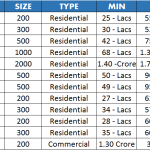History of Gawadar

Gwadar is a port city located on the southwestern coast of Pakistan in the province of Balochistan. The city has a rich history that spans over 5,000 years.
The earliest known inhabitants of the region were the Mehrgarh people, who lived in the area around 7000 BCE. Archaeological excavations have uncovered artifacts that suggest that the Mehrgarh people were skilled farmers and craftsmen.
In ancient times, Gwadar was an important port and trading center for the Persian Empire. The city was known as “Sarang” and was part of the Makran region, which was a buffer zone between the Persian Empire and the Indian subcontinent.
Over the centuries, Gwadar was ruled by various dynasties, including the Arab Umayyad Caliphate, the Mongols, and the Mughals. The city was also an important center for the fishing and maritime industries.
In the 18th century, Gwadar came under the control of the Khan of Kalat, a local Balochi ruler. The Khan of Kalat granted the city to the Sultan of Muscat, who used it as a trading post.
In 1958, Gwadar became part of Pakistan after the country gained independence from British colonial rule. However, the city remained underdeveloped and neglected for several decades.
In the early 2000s, the Pakistani government recognized the strategic importance of Gwadar’s deep-sea port and its potential to become a major hub for international trade. With the help of Chinese financing and expertise, the government began a multi-phase development project to modernize and expand the port, as well as develop the surrounding infrastructure and economy.
Today, Gwadar is a rapidly developing city that is poised to become a major player in the global economy. Its strategic location and natural resources make it a valuable asset for Pakistan and its partners.



 Peshwar High Court Ruling: Section 7E (...
Peshwar High Court Ruling: Section 7E (... FBR to Raise Property Rates Aiming High...
FBR to Raise Property Rates Aiming High... US Dollar VS Pakistan’s Real Esta...
US Dollar VS Pakistan’s Real Esta... Key Real Estate Amendments in Finance A...
Key Real Estate Amendments in Finance A...








There are no comments yet, add one below.